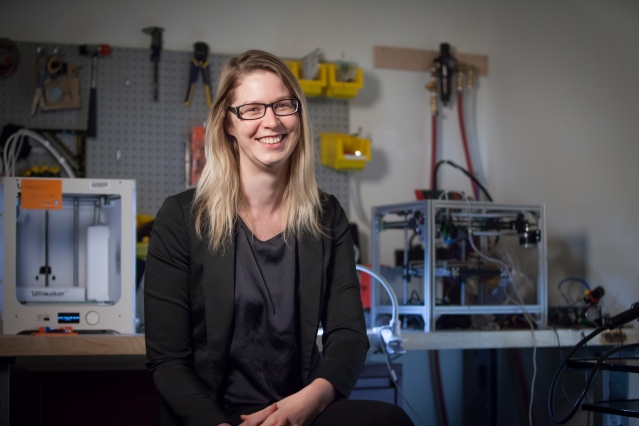3-D printing has come a long way since the first rapid prototyping patent was rejected in 1980. The technology has evolved from basic designs to a wide range of highly-customizable objects. Still, there’s a big issue: Once objects are printed, they’re final. If you need a change, you’ll need a reprint.
But imagine if that weren’t the case — if, for example, you could change the color of your smartphone case or earrings on demand.
Researchers from MIT’s Computer Science and Artificial Intelligence Laboratory (CSAIL) have gotten closer to making that a reality. In a new paper, they present ColorMod, a method for repeatedly changing the colors of 3-D printed objects, after fabrication.
Using their own 3-D printable ink that changes color when exposed to ultraviolet light, the team can recolor a multicolored object in just over 20 minutes — and they say they expect that number to decrease significantly with future improvements.
While the project is currently focused on plastics and other common 3-D printing materials, the researchers say that eventually people could instantly change the color of their clothes and other items.
“Largely speaking, people are consuming a lot more now than 20 years ago, and they’re creating a lot of waste,” says Stefanie Mueller, the X-Consortium Career Development Assistant Professor in the departments of Electrical Engineering and Computer Science and Mechanical Engineering. “By changing an object’s color, you don’t have to create a whole new object every time.”
Mueller co-authored the paper with postdoc Parinya Punpongsanon, undergraduate Xin Wen, and researcher David Kim. It has been accepted to the ACM CHI Conference on Human Factors in Computing Systems, which takes place in April in Montreal.
How it works
Previous color-changing systems have been somewhat limited in their capabilities, using single colors and 2-D designs, for example.
To move beyond single-color systems, the team developed a simple hardware/software workflow. First, using the ColorMod interface, users upload their 3-D model, pick their desired color patterns, and then print their fully colored object.
After printing, changing the multicolored objects involves using ultraviolet light to activate desired colors and visible light to deactivate others. Specifically, the team uses an ultraviolet light to change the pixels on an object from transparent to colored, and a regular office projector to turn them from colored to transparent.
The team’s custom ink is made of a base dye, a photoinitiator, and light-adaptable dyes. The light-adaptable (photochromic) dyes bring out the color in the base dye, and the photoinitiator lets the base dye harden during 3-D printing.
“Appearance adaptivity in general is always a superior feature to have, and we’ve seen many other kinds of adaptivity enabled with manufactured objects,” says Changxi Zheng, an associate professor at Columbia University who co-directs Columbia’s Computer Graphics Group. “This work is a true breakthrough in being able to change the color of objects without repainting them.”
The team tested ColorMod on three criteria: recoloring time, precision, and how quickly the color decayed. A full recoloring process took 23 minutes. However, the researchers note that they could speed up the process by using a more powerful light or adding more light-adaptable dye to the ink.
They also found the colors to be a bit grainy, which they hope to improve on by activating colors closer together on an object. For example, activating blue and red might show purple, while activating red and green would show yellow.
Mueller says that the goal is for people to be able to rapidly match their accessories to their outfits in an efficient, less wasteful way. Another idea is for retail stores to be able to customize products in real-time, if, for example, a shopper wants to try on an article of clothing or accessory in a different color.
“This is the first 3-D-printable photochromic system that has a complete printing and recoloring process that’s relatively easy for users,” Punpongsanon says. “It’s a big step for 3-D printing to be able to dynamically update the printed object after fabrication in a cost-effective manner.”

